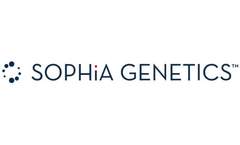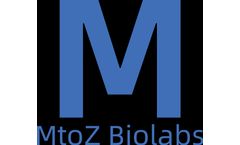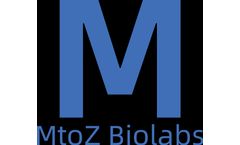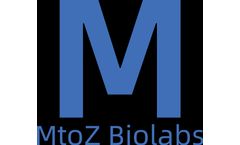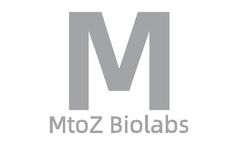Refine by
Dna Sequencing Articles & Analysis: Older
71 articles found
This process involves the integration of specific DNA sequences into precise loci within the genome, allowing scientists to explore gene function, model diseases, and develop new treatments. ...
These technologies allow scientists to cut, insert, or modify specific DNA sequences, enabling the customization of T cells to recognize and attack disease-specific antigens. ...
In microbial research, OTUs are primarily utilized to analyze gene sequence datasets, particularly those derived from modern sequencing technologies. The clustering of OTUs is typically based on DNA sequence similarity, with a common threshold set at 97%. This means that sequences that share 97% or greater ...
A critical step in the NGS workflow is library preparation, which involves converting DNA or RNA samples into a form that can be sequenced. NGS Library Preparation Kits play a pivotal role in this process, ensuring high-quality libraries that yield optimal sequencing results. ...
Let me introduce you to the key players: RNA Polymerase: The Architect RNA polymerase is the cornerstone enzyme for mRNA transcription. Its function is to read DNA sequences and synthesize a complementary mRNA strand. It acts like a skilled architect, carefully laying down the blueprint for the mRNA that mirrors the DNA template. ...
It enables the insertion, deletion, or replacement of specific DNA sequences in the zebrafish genome, proving instrumental for researchers to decode the mysteries of genetic mechanisms. ...
This process involves deleting, inserting, or modifying DNA in the bacterial genome, providing a powerful tool for studying gene function and genetic manipulation. The process uses nucleases that have been engineered to target specific DNA sequences, where they introduce double-strand breaks (DSBs) in the DNA molecule. ...
How to Choose Sequencing read types: single-end versus paired-end reading? When it comes to sequencing DNA for genomics research, one critical decision that researchers must make is whether to use single-end or paired-end sequencing reads. Both options have their advantages and disadvantages, and researchers must carefully ...
The Epigenetic Approach utilized by Creative Bioarray involves the manipulation of gene expression without altering the underlying DNA sequence. By modulating the epigenetic marks on the genome, such as DNA methylation and histone modifications, the cells are induced to overcome senescence and achieve immortality. ...
The backbone of clonality analysis is DNA and RNA sequencing, the most precise methods of determining the genetic makeup of cells. ...
ESMO updated its recommendations for NGS in advanced cancers this year, urging broader use of NGS in additional cancer types and the inclusion of tumor-agnostic biomarkers. The ESMO Precision Medicine Working Group (PMWG) first published its recommendations for when to use next-generation sequencing (NGS) in routine practice for patients with metastatic cancers in 20201. At that time, based ...
These cells are the sources of antibody generation, and their internal DNA contains antibody sequence information.Extract RNAThe RNA in immune cells is the carrier of antibody sequence information, and the sample needs to be extracted for RNA.Transcribe to cDNAIt needs to be transcribed into cDNA by reverse transcriptase.Amplify Antibody ...
Also, adopting multiple discovery modes, such as polyclonal antibody sequencing, B-cell sequencing in conjunction with computer modeling, can also increase the chances of success. ...
Overview of Single-Antibody SequencingSingle-antibody sequencing, as the name suggests, is a technique that uses a single antibody to sequence DNA. ...
The Human Genome Project, a monumental endeavor to map our complete DNA sequence, was nearing completion. This vast undertaking revealed thousands of novel genes, previously unknown. ...
The dCas9 fusion protein targets DNA sequences through sgRNA, but the inactive dCas9 cannot catalyze DNA. ...
In this method, the mRNA is first hybridized with a biotinylated probe complementary to the 5' end of the target mRNA. This probe contains several DNA nucleotides arranged in sequence, which form a DNA:RNA duplex when hybridized with mRNA. ...
There are unlimited uses for point mutation cell lines at pre-defined loci, including functional assays, drug screening, FACS screening of membrane proteins, gene expression studies, gene therapy and antibody immunization boosting research. The RNA-guided DNA endonuclease Cas9 associates with a synthetic single guide RNA (gRNA) and cleaves double-stranded DNA ...
With years of experience in service of genomic library construction, Creative Biogene can construct genomic libraries from nanogram quantities of genomic DNA or milligram quantities of the tissue. Besides, Creative Biogene can construct large insert genomic libraries with different clone vectors, such as BAC, cosmid, bacteriophage, plasmid vectors etc. ...
Meanwhile, PNA monomers offer an arena of exploration beyond DNA and RNA. Peptide nucleic acids are synthetic polymers designed to mimic the behavior of DNA or RNA but are neutral and more chemically stable because they lack the negatively charged phosphate backbone. ...





